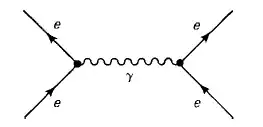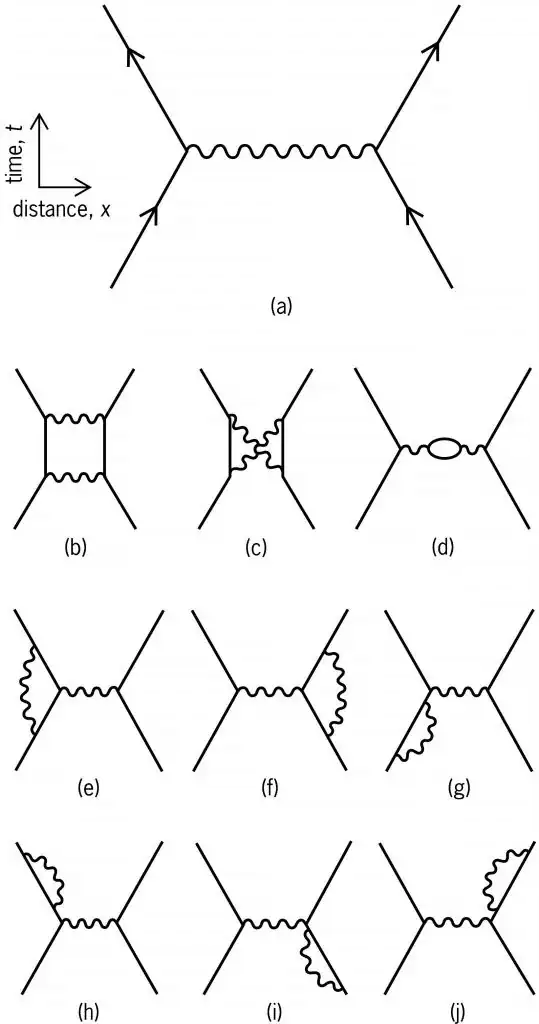I read from the article quoted by @JohnRennie:
The illustration shows Feynman diagrams for electron-electron
scattering. In each diagram, the straight lines represent space-time trajectories of noninteracting electrons, and the wavy lines represent photons, particles that transmit the electromagnetic interaction. External lines at the bottom of each diagram represent incoming particles (before the interactions), and lines at the top, outgoing particles (after the interactions). Interactions between photons and electrons occur at the vertices where photon lines meet electron lines.
Well, this is wrong. Although it's also possible to interpret Feynman diagrams as representing space-time diagrams [1] their form now in universal use is as a momentum space diagram, and a topological one. The only things a diagram is meant to show are relationships between interaction vertices and exchanged momenta.
It would be humorous to interpret the reported diagrams as space-time ones: you would have photons going from here to there following curved paths etc.
[1] Feynman diagrams

